new posts in all blogs
Viewing: Blog Posts Tagged with: Christopher Paolini, Most Recent at Top [Help]
Results 1 - 17 of 17
How to use this Page
You are viewing the most recent posts tagged with the words: Christopher Paolini in the JacketFlap blog reader. What is a tag? Think of a tag as a keyword or category label. Tags can both help you find posts on JacketFlap.com as well as provide an easy way for you to "remember" and classify posts for later recall. Try adding a tag yourself by clicking "Add a tag" below a post's header. Scroll down through the list of Recent Posts in the left column and click on a post title that sounds interesting. You can view all posts from a specific blog by clicking the Blog name in the right column, or you can click a 'More Posts from this Blog' link in any individual post.
 Soon it will be time to buy a new calendar for 2014. Earlier in the year, photographer Lauren Zurchin ran a Kickstarter campaign to raise money for a fantasy author-themed calendar project called “Beyond Words: A Year of Daydreams.”
Soon it will be time to buy a new calendar for 2014. Earlier in the year, photographer Lauren Zurchin ran a Kickstarter campaign to raise money for a fantasy author-themed calendar project called “Beyond Words: A Year of Daydreams.”
The calendar is now complete and features photos of fourteen authors dressed up as fantasy characters. Each calendar costs $20; the proceeds generated from the sale of these calendars will be donated to First Book and Worldbuilders.
The participating authors include Lauren Oliver as a trapped spirit, Gregory Maguire as a steampunk automaton, Cassandra Clare as Autumn, and Christopher Paolini as Death. Here’s more about Paolini’s photo shoot:
continued…
New Career Opportunities Daily: The best jobs in media.
.jpg?picon=980)
By:
Cheryl Rainfield,
on 10/25/2012
Blog:
Cheryl Rainfield: Avid Reader, Teen Fiction Writer, and Book-a-holic. Focus on Children & Teen Books
(
Login to Add to MyJacketFlap)
JacketFlap tags:
Christopher Paolini,
YA author chat,
YA author,
author chat,
Stefan Bachmann,
Rachel Hartman,
fantasy author chat,
Add a tag
Join three best-selling fantasy authors in an online video chat on Shindig.com!
FANTASTICAL WORLDS:
In Conversation with Rachel Hartman, Stefan Bachmann, and Christopher Paolini
November 28, 2012, from 2PM – 3PM
Rachel Hartman, author of the critically acclaimed, instant New York Times bestseller SERAPHINA; Stefan Bachmann, author of THE PECULIAR (Harper Collins), and Christopher Paolini, author of the international bestselling series the Inheritance cycle and, most recently, the INHERITANCE deluxe edition, will discuss what inspires them & their characters and take viewer questions.
See Shindig for more information.
- Connect with Rachel Hartman:
@_rachelhartman
RachelHartmanBooks.com
SeraphinaBooks.com
- Connect with Stefan Bachmann
@Stefan_Bachmann
scathingjellyfish.blogspot.com/
- Connect with Christopher Paolini
@InheritanceCP
Alagaesia.com

By: Maryann Yin,
on 3/14/2012
Blog:
Galley Cat (Mediabistro)
(
Login to Add to MyJacketFlap)
JacketFlap tags:
Awards,
Children's Books,
Brian Selznick,
James Patterson,
Eric Carle,
Christopher Paolini,
Lane Smith,
Rick Riordan,
Jeff Kinney,
David Weisner,
Rachel Renee Russell,
Victoria Kann,
Anna Dewdney,
Felicia Bond,
Children’s Choice Book Awards,
Add a tag
 The 2012 finalists for the Children’s Choice Book Awards have been revealed. Kids can vote from March 14th to May 3rd.
The 2012 finalists for the Children’s Choice Book Awards have been revealed. Kids can vote from March 14th to May 3rd.
The winners will be announced live at the Children’s Choice Book Awards gala on May 7th. Nominees have been divided into four groups classified by different school grades.
In the Author of the Year category, middle-grade fiction writers dominate. The nominees include Diary of a Wimpy Kid 6: Cabin Fever by Jeff Kinney, Inheritance by Christopher Paolini, Middle School, The Worst Years of My Life by James Patterson, The Son of Neptune by Rick Riordan and Dork Diaries 3: Tales from a Not-So-Talented Pop Star by Rachel Renée Russell.
continued…
New Career Opportunities Daily: The best jobs in media.
By:
Bianca Schulze,
on 2/29/2012
Blog:
The Children's Book Review
(
Login to Add to MyJacketFlap)
JacketFlap tags:
Suzanne Collins,
Jane O'Connor,
Rob Scotton,
Tom Lichtenheld,
Michael Morpurgo,
Carl Hiaasen,
Jon Klassen,
Ransom Riggs,
Sandra Boynton,
Mary Pope Osbourne,
Lincoln Peirce,
Mike & Jan Berenstain,
Amanda Hocking,
Sherri Duskey Rinker,
Teens: Young Adults,
Julie Fogliano,
Daniel Lipkowitz,
Ages 0-3,
Ages 4-8,
Ages 9-12,
Dr. Seuss,
Book Lists,
John Green,
featured,
Jay Asher,
Christopher Paolini,
Rick Riordan,
Markus Zusak,
Jeff Kinney,
Best Sellers,
Add a tag
By Bianca Schulze, The Children’s Book Review
Published: March 1, 2012
Here’s the scoop on the most popular destinations on The Children’s Book Review site, the most coveted new releases and bestsellers.
THE HOT SPOTS: THE TRENDS
Award-Winning Illustrator Marla Frazee & the Best Interview Ever
Author Interview: Gary Paulsen
Newbery Medal Winners, 2012
How Picture Books Play a Role in a Child’s Development
Wonderful Winter Books for Kids
THE NEW RELEASES
The most coveted books that release this month:
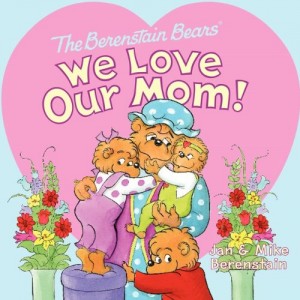 The Berenstain Bears: We Love Our Mom!
The Berenstain Bears: We Love Our Mom!
by Jan Berenstain
(Ages 3-7)
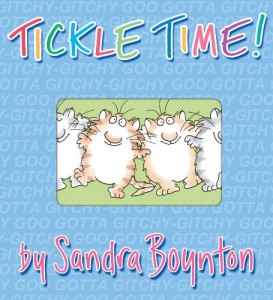 Tickle Time!: A Boynton on Board Board Book
Tickle Time!: A Boynton on Board Board Book
by Sandra Boynton
(Ages 0-3)
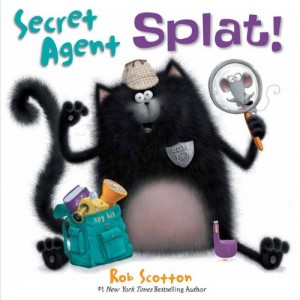 Secret Agent Splat!
Secret Agent Splat!
by Rob Scotton
(Ages 3-7)
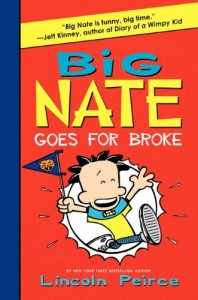 Big Nate Goes for Broke
Big Nate Goes for Broke
by Lincoln Peirce
(Ages 8-12)
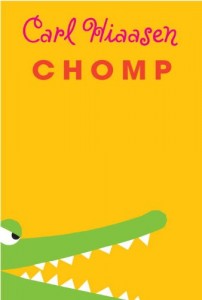 Chomp
Chomp
by Carl Hiaasen
(Ages 10-12)
THE BEST SELLERS
The best selling children’s books this month:
PICTURE BOOKS

By: Jason Boog,
on 1/23/2012
Blog:
Galley Cat (Mediabistro)
(
Login to Add to MyJacketFlap)
JacketFlap tags:
J.K. Rowling,
Lit Crit,
Stephenie Meyer,
Stephen King,
Sara Gruen,
Christopher Paolini,
Suzanne Collins,
George R.R. Martin,
Janet Evanovich,
Jonathan Safran Foer,
Stieg Larsson,
Kathryn Stockett,
GalleyCat Reviews,
Tea Obreht,
Shiloh Walker,
Deborah Harkness,
Add a tag
 Do negative reviews stop people from reading your books? Over at her blog, novelist Shiloh Walker disputed that claim in a passionate essay.
Do negative reviews stop people from reading your books? Over at her blog, novelist Shiloh Walker disputed that claim in a passionate essay.
Check it out: “That negative review isn’t going to kill your career. Will it stop a few people from buying your book? Possibly–because that book may not be right for them. And FYI, one of the rants lately was that negative reviews discouraged people from reading … readers aren’t discouraged by ‘bad’ reviews. And guess what–that negative review may be the very thing that entices another reader to buy your book.”
We were so inspired by her work that we checked negative reviews of ten authors at Amazon–counting the massive amount of one-star reviews received by bestselling authors. Twilight topped the list with 669 one-star reviews. Read this list before you complain about your next bad review.
continued…
New Career Opportunities Daily: The best jobs in media.
By: Jason Boog,
on 1/23/2012
Blog:
Schiel & Denver Book Publishers Blog
(
Login to Add to MyJacketFlap)
JacketFlap tags:
J.K. Rowling,
Lit Crit,
Stephenie Meyer,
stephen king,
Sara Gruen,
Christopher Paolini,
suzanne collins,
Janet Evanovich,
Jonathan Safran Foer,
Stieg Larsson,
George R R Martin,
Kathryn Stockett,
GalleyCat Reviews,
Tea Obreht,
Shiloh Walker,
Deborah Harkness,
Add a tag
 Do negative reviews stop people from reading your books? Over at her blog, novelist Shiloh Walker disputed that claim in a passionate essay.
Do negative reviews stop people from reading your books? Over at her blog, novelist Shiloh Walker disputed that claim in a passionate essay.
Check it out: “That negative review isn’t going to kill your career. Will it stop a few people from buying your book? Possibly–because that book may not be right for them. And FYI, one of the rants lately was that negative reviews discouraged people from reading … readers aren’t discouraged by ‘bad’ reviews. And guess what–that negative review may be the very thing that entices another reader to buy your book.”
We were so inspired by her work that we checked negative reviews of ten authors at Amazon–counting the massive amount of one-star reviews received by bestselling authors. Twilight topped the list with 669 one-star reviews. Read this list before you complain about your next bad review.
continued…
New Career Opportunities Daily: The best jobs in media.
By:
Bianca Schulze,
on 11/30/2011
Blog:
The Children's Book Review
(
Login to Add to MyJacketFlap)
JacketFlap tags:
James Patterson,
Sherman Alexie,
Eric Carle,
Jay Asher,
Christopher Paolini,
Rick Riordan,
Markus Zusak,
Shel Silverstein,
John Grisham,
Sara Shepard,
Jeff Kinney,
Best Sellers,
Suzanne Collins,
Laura Numeroff,
Joan Holub,
Jan Brett,
Ages Nine to Twelve: Books for Third Through Sixth Grade,
Teens: Books for young adults,
Suzanne Williams,
Book Lists: Specialty Picks,
Lincoln Peirce,
Felicia Bond,
Herve Tullet,
Ages Four to Eight: Books for Pre-School Through Second Grade,
Jill Dembowski,
Picture Books,
Dr. Seuss,
Chapter Books,
Stephenie Meyer,
Brian Selznick,
Add a tag
By Bianca Schulze, The Children’s Book Review
Published: December 1, 2011
Here’s the scoop on the most popular destinations on The Children’s Book Review site, the most coveted new releases and bestsellers.
THE HOT SPOTS: THE TRENDS
Kids’ Christmas Books: For the Naughty & Nice
Cedella Marley Inspires with “One Love”
Author Interview: Gary Paulsen
Review: Scat by Carl Hiaasen
Where to Find Free eBooks for Children Online
THE NEW RELEASES
The most coveted books that release this month:
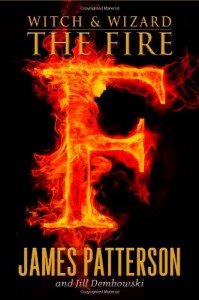 Witch & Wizard: The Fire
Witch & Wizard: The Fire
by James Patterson and Jill Dembowski
(Ages 11-15)
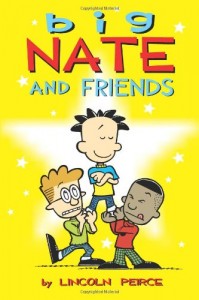 Big Nate and Friends
Big Nate and Friends
by Lincoln Peirce
(Ages 8-12)
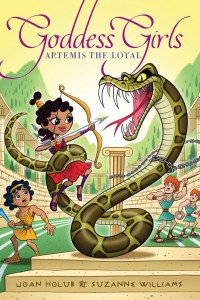 Artemis the Loyal (Goddess Girls)
Artemis the Loyal (Goddess Girls)
by Joan Holub and Suzanne Williams
(Ages 8-12)
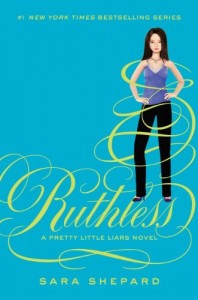 Pretty Little Liars #10: Ruthless
Pretty Little Liars #10: Ruthless
by Sara Shepard
(Ages 14-17)
THE BEST SELLERS
The best selling children’s books this month:
PICTURE BOOKS
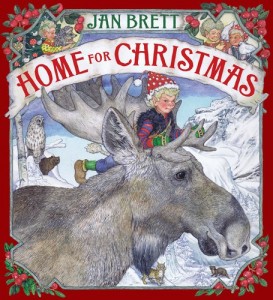 Home for Christmas
Home for Christmas
by Jan Brett
(Ages 0-5)
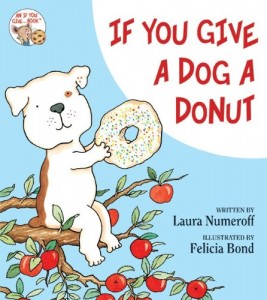
Christopher Paolini is likely to turn his hand to science fiction for his next work, as the final book in his epic Inheritance Cycle series is published this week.
The series has sold 4.5m in export and UK sales, including 1.2m in the UK (TCM sales), since the first book Eragon was published in 2004.
read more
By:
Bianca Schulze,
on 11/1/2011
Blog:
The Children's Book Review
(
Login to Add to MyJacketFlap)
JacketFlap tags:
Neil Gaiman,
Picture Books,
Dr. Seuss,
Chapter Books,
Stephenie Meyer,
Brian Selznick,
Sherman Alexie,
Eric Carle,
Jay Asher,
Christopher Paolini,
Lita Judge,
Rick Riordan,
Markus Zusak,
Shel Silverstein,
John Grisham,
Jeff Kinney,
Best Sellers,
Suzanne Collins,
Laura Numeroff,
Jan Brett,
Annie Barrows,
John Flanagan,
Goodie Bag: Books to share and give,
Ages Nine to Twelve: Books for Third Through Sixth Grade,
Teens: Books for young adults,
Book Lists: Specialty Picks,
Ages Baby to Three: Books for infants and toddlers,
Anna Dewdney,
Felicia Bond,
Gail Silver,
Herve Tullet,
Ages Four to Eight: Books for Pre-School Through Second Grade,
Add a tag
By Bianca Schulze, The Children’s Book Review
Published: November 1, 2011
Here’s the scoop on the most popular destinations on The Children’s Book Review site, the most coveted new releases and bestsellers.
THE HOT SPOTS: THE TRENDS
Cedella Marley Inspires with “One Love”
Author Interview: Gary Paulsen
Lessons from Laura Ingalls Wilder
Review: Scat by Carl Hiaasen
Where to Find Free eBooks for Children Online
THE NEW RELEASES
The most coveted books that release this month:
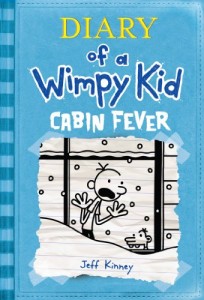 Diary of a Wimpy Kid: Cabin Fever
Diary of a Wimpy Kid: Cabin Fever
by Jeff Kinney
(Ages 8-11)
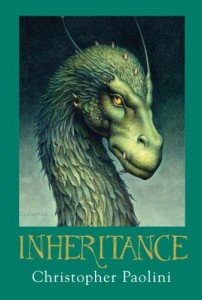 Inheritance
Inheritance
by Christopher Paolini
(Young Adult)
 Home for Christmas
Home for Christmas
by Jan Brett
(Ages 0-5)
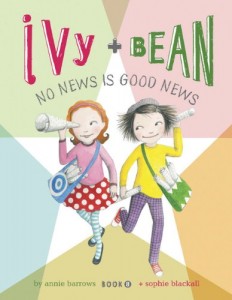 Ivy an Bean: No News is Good News
Ivy an Bean: No News is Good News
by Annie Barrows
(Ages 6-9)
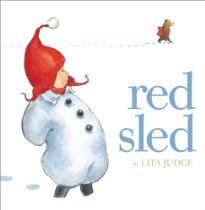 Red Sled
Red Sled
by Lita Judge
(Ages 0-5)
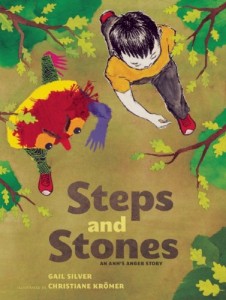 Steps and Stones: An Anh’s Anger Story
Steps and Stones: An Anh’s Anger Story
by Gail Silver
(Ages 4-10)
THE BEST SELLERS
<
I'm doing the 100 Books in a Year Challenge, from both Goodreads and Book Chick City.
Goodreads says I'm 19 books behind. So, there's no way I'm gonna read 9+ books this weekend, but I do want to finish the five I'm reading:
- Inside Out, by Maria V. Snyder.
- Blood Witch, by Cate Tiernan.
- Dark Lover, by J. R. Ward.
- Nightshade, by Andrea Cremer.
- and Eragon, by Christopher Paolini.
I know I can finish the first four, but I barely started Eragon, so I might not finish it by Monday. We'll see.
xo,
Ella

By:
Melissa Wiley,
on 7/31/2010
Blog:
Here in the Bonny Glen
(
Login to Add to MyJacketFlap)
JacketFlap tags:
Books,
Christopher Paolini,
epic fantasy,
SDCC,
Megan Whalen Turner,
Brandon Sanderson,
high fantasy,
Patrick Rothfuss,
SDCC 2010,
Brent Weeks,
Lynn Flewelling,
Add a tag
It’s a week after Comic-Con and I’m still working through my notes! Two more panels and another booklist to post, and then it’s likely to get quiet around here for a spell.
I scrawled a crazy amount of notes at the Once Upon a Time panel—six authors of epic fantasy discussing their craft—but the odds of my being able to translate the scrawl to English are slimmish, so never fear. This was a fascinating panel. (Hence the 12 pages of notes.) Have I mentioned I love hearing other writers talk about their work? Yeah.
The panelists, in order of seating: Brandon Sanderson, Brent Weeks, Lynn Flewelling, Megan Whalen Turner, Christopher Paolini, Patrick Rothfuss. The moderator: Maryelizabeth Hart of the awesome Mysterious Galaxy bookstore. She was great. They were all great.
Hart’s first question was about the everyman character vs. the larger-than-life superheroic character. In epic fantasy, with these sweeping adventures and grand-scale worldbuilding, does the main character also need to be larger than life?
SANDERSON: talked about Bilbo and Frodo, everymen, little guys, ordinary, small. “If Tolkien did it, it must be okay.” (Gave context of Tolkien as originator of high fantasy.) Made interesting point about Sam having superheroic loyalty—i.e. Sam is not a typical everyman. But came back to “at core of every everyman there is something exceptional.”
WEEKS: If we can follow them [everyman characters] through that journey, we are great too. We know there is something great within us, potential; as the everyman becomes great, we become great with him.
FLEWELLING: likes to see the process (of becoming great), doesn’t like to see heroes from the start. Wants backstory. If protag is superstrong, etc, can be boring.
WHALEN TURNER: Likes themes of “extraordinary performances of ordinary people.” Talked in terms of flavors—her favorite flavor is a book about an extraordinary person, but it requires careful handling to maintain dramatic tension. Spoke about the Mary Sue character, two different definitions of that; one is “squicky,” where the character represents the author; but in another sense a Mary Sue character is an everyman who can represent the reader. She likes that, thinks it makes for satisfying story.
PAOLINI: Basically it comes down to: “Batman is better than Superman.” (Gets huge laugh.) Talked about the difference between the extraordinary SETTING and the extraordinary CHARACTER. You can put an extraordinary character in an ordinary setting (like Superman in Kansas corn field) or vice versa, ordinary guy in extraordinary setting (Frodo in Mordor). Over time, the ordinary character becomes larger-than-life—best example, he says, is Arthur Dent in Hitchhiker’s Guide to the Galaxy, “a larger-than-life doofus” with flaws and weaknesses.
ROTHFUSS: 1) Paolini beat him to the Batman thing. 2) He’s a contrarian so has to reflexively disagree with what everyone else said. (Big laugh.) For him, a really big story (and epic fantasy is always a really big story) needs an everyman for people to relate to. He also spoke about the Mary Sue—my notes say “Your main char is one”—was he talking to Paolini? I think so, think it got a laugh, Paolini nodding in agreement. Rothfuss likes characters like Cyrano, Odysseus—unusually cool and clever.
PAOLINI: discussed “hereditary vs earned skills” (again Superman—hereditary—and Batman—earned/learned). “Escalating powers” can make problems for a writer—if the guy can simply “snuff the sun,” no story left. He too likes CLEVERNESS in a character.
SANDERSON: talked about origin of epic fantasy, founded by Tolkien, before that there were heroic tales (Conan, Tarzan, the guy starts off as hero). Tolk
By:
Samantha Clark,
on 7/3/2009
Blog:
Day By Day Writer
(
Login to Add to MyJacketFlap)
JacketFlap tags:
Underland Chronicles,
Michelle Styles,
Terry Prachett,
Percy Jackson books,
Peter Pan in Scarlett,
third-person,
omniscient narrative,
switching pov,
switching point of view,
harry potter,
j.k. rowling,
point of view,
Eragon,
Writing,
pov,
Christopher Paolini,
Rick Riordan,
Suzanne Collins,
Add a tag
What I’m referring to in the name of this post is not actually this post but another I just found on eHarlequin. Author Michelle Styles writes about POV in a really great way, I think, in her blog post Switching Point of View v Head Hopping.
I went in search of a good article about this because I needed a kind of kick in the pants that says, “Go on, try it. It could work. It’s ok to break the rules.” Michelle gave me just the right way of thinking about it. Although switching point of view isn’t, shall we say, encouraged, especially with middle-grade books, if the writing isn’t confusing (i.e. the reader always knows whose head he’s in), then switching POV is fine as long as it works for the story. Besides, as Michelle points out, Terry Prachett does it brilliantly, and he’s one of my favorite authors.
I love this last part of Michelle’s post:
There is NO hard and fast rule. The only rule is the story. If the story flows and the tension is high, you can shift as the story dictates. If the tension is low, not even slavish devotion to one point of view will save it.
Techniques are there to be mastered, rather than followed blindly.
(But the whole post is great, so click here and read it.)
Once again, story is king!
I wrote about switching POV a couple days ago and got some fabulous, encouraging comments about it. What I really need to do next is start typing and try it, but I was kinda busy today. It was always on my mind, though, and I decided to do a little research and flip through the books on my shelves and remind myself of how they handled their POVs.
I just finished the fourth book in Rick Riordan’s Percy Jackson series (fantastic, if you haven’t tried them), but they’re all first person, and I’m not feeling that style for me as a writer. I’m currently reading the second book in Suzanne Collins’ Underland Chronicles (also fantastic), and that’s solely in the third-person protagonist’s POV, like my first book. Both of these styles work really well to bring the reader totally into the character’s world.
A book I read a while ago, Peter Pan in Scarlett, is in omniscient narrative, and although the book is very entertaining and has some delightful throwbacks to the original classic, I must admit it was a bit of a struggle for me in the first half. I never really felt like I was in the head of Peter, Wendy or any of the characters. I really was just kind of floating above and didn’t feel as though I was in the story, part of the story.
In the Eragon books, Christopher Paolini deftly switches pov every chapter or so (especially in the third book), but he does something interesting: His characters are given a sort of heirarchy, with Eragon at the top. Whenever Eragon is in a scene, it’s in his POV and we see the other characters through his eyes. But when there’s a scene with one of the lesser characters when Eragon isn’t around, Paolini chooses which character has the most to gain (storywise) from the scene and that’s whose POV it’s told in. Again, it works very well. There’s no switching within scenes, and each scene begins with some action, thought, something from the character whose POV we’re seeing through, so no confusion.
Then I spied the last Harry Potter book and something told me to go back and read the opening of the first book, Sorcerer’s Stone. Wow! I hadn’t remembered (and when I read this book I wasn’t dissecting it like I am now), but J.K. Rowling begins the initial scene in Mr. Dursley’s head, then when he goes to sleep, the POV switches to McGonagall as the cat, then to Dumbledore, and finally baby Harry. There are some narratory sentences (”How very wrong he was”), but it doesn’t read like omniscient narrative. It reads like third person switching from head to head, but it’s written so well that as a reader, you’re never confused about who you’re following, who’s head you’re in. And ultimately, it tells the story very well, which is exactly what Michelle was talking about in her excellent post on POV.
Ok, now I know what you’re thinking: Stop analyzing it and go write it! And you’re right. I will. But first, I must get some sleep. I’ll set the alarm for early, even on a Saturday — shudder.
How are you guys coming along?
Write On!
P.S. No word count from me today because all I managed to have time for was 11 words, but lots of research. I’ll post a word count tomorrow.






By:
Samantha Clark,
on 5/29/2009
Blog:
Day By Day Writer
(
Login to Add to MyJacketFlap)
JacketFlap tags:
Michael Buckley,
rules,
Revising,
Christopher Paolini,
guidelines,
Sisters Grimm Fairy Tale Detectives,
books,
j.k. rowling,
Eragon,
Writing,
Add a tag
I’ve been going through a reading spurt lately, after I finished the third (and hefty) Eragon book, and I’ve noticed that you can’t judge the validity of the “rules” of writing based on what’s selling in stores.
There are plenty of “rules” that we hear when we’re just starting. I put the word in quotes because really, they’re not rules, but they’re things that as newbies, we might not be able to get away with as much as an established author. They’re things you’ll hear from fellow writers as well as in critiques, both from agents and editors.
What are the “rules”? Here’s a few that I’ve heard and seen broken in books I recently read:
Stick to one point of view: The first draft of my novel switched POV between my protagonist and his father for the first half of the book, then, after the two story lines had come together, focused on the protagonist. In a critique workshop with an agent, I was told children’s books rarely switch POV and I should rework it to just be from my protagonist’s POV. I did, and it worked out fine. But, if you read bestsellers out now, you’ll see that many don’t do this. Christopher Paolini’s Eragon books are a good example.
Avoid ly words: I’ve heard this one a lot, and as guidelines go, it makes sense. The descriptive ly words can slow down prose. Many times, they’re not needed. This is an extreme example, but you don’t need to write “STOP!” the man said loudly. The STOP! tells us he’s saying it loudly. But, I can’t help enjoying ly words at times. I use them probably more than those who tell the “rules” would like, but I like them. To me, used well, they can be delicious and make a sentence that would have been toast and jam, toast and jam with whipped cream and sprinkles. And guess who uses them a lot: J.K. Rowling. She’s pretty successful. 
Never use the word Suddenly: I’ve heard this one a lot too, and actually, I’ve got to say I agree. Never is a bit strong. There’s probably a time and place when suddenly would spark up a paragraph, but not with sentences like: Suddenly, she grabbed him. Using the word suddenly to describe that something, well, suddenly happens, is fine but it’s easy. It’s the quick go to word, but it’s not the most creative way to move the action. Don’t get me wrong, I’ve used this word, and in sentences like my example, plenty of times. But when I see them in my revisions, I try to rewrite them. And most of the time, the context of the story, the action, is moving fine and doesn’t need a suddenly thrown in. Recently, I read the first book in the Sisters Grimm Fairy Tale Detectives series by Michael Buckley and was surprised to see that in the climactic scenes near the end of the book, Suddenly was running around lose and fancy free. Now, I really loved this book. The characters were strong, the story fun and many many times Buckley had me laughing out loud. But, to be honest, all the suddenlys stuck out to me, and I don’t know if it’s because I’ve heard the “rule” so much or what, but it actually slowed the pace of the action. They weren’t needed, because the action was doing fine without them.
For newbie writers trying to get a foot in the business, sure, we have to make sure our manuscripts are Mr. Clean clean. They’re going to be scrutinized more than one from an author whose last book sold 100,000 copies. Do we stick to the “rules” or break them? I say, go with your heart. Ultimately, tell a great story in a great way. If it’s a little unconventional, breaking the “rules” so to speak, it might take a little longer to find the right agent and editor, but you will; if you believe in your story, you will. But it’s good to know the “rules” so you can decide whether you want to break them. Some of them are said for a reason.
What “rules” have you heard and seen ignored in the bestsellers?
Write On!






We're kicking off our new Monday/Wednesday posting schedule on the Ypulse Books Channel today with a new feature called AudioFile. In our first AudioFile, Alli muses over the experience of "reading" or "listening" and comes... Read the rest of this post

By:
Sheila Ruth,
on 1/16/2008
Blog:
Wands and Worlds
(
Login to Add to MyJacketFlap)
JacketFlap tags:
inheritance,
christopher paolini,
young adult books,
eragon,
fantasy,
announcements,
dragons,
inheritance,
christopher paolini,
Add a tag

Random House has announced that book 3 of Christopher Paolini's Inheritance cycle will be called Brisingr! It will be released on September 20, 2008. The cover features a picture of the gold dragon Glaedr.
From the press release:
“BRISINGR is one of the first words I thought of for this title, and it’s always felt right to me,” said Christopher Paolini. “As the first ancient-language word that Eragon learns, it has held particular significance for his legacy as a Dragon Rider. In this new book, it will be revealed to be even more meaningful than even Eragon could have known.”
Read the press release here.
Brisingr is the sequel to the popular books Eragon and Eldest. Fans have speculated that the title of the third book would begin with an 'E' also, like the first two books. Empire was a popular guess for the book 3 title. I think the actual title will catch a lot of people by surprise.
The Random House AuthorTracker email provides more clues to the title and cover: "Both elements of the cover, the gold dragon Glaedr and the title, touch on Eragon’s inheritance. With his painting, John Jude Palencar has captured the dignity and wisdom of Glaedr, and Random House has again designed an awesome book cover."
 Soon it will be time to buy a new calendar for 2014. Earlier in the year, photographer Lauren Zurchin ran a Kickstarter campaign to raise money for a fantasy author-themed calendar project called “Beyond Words: A Year of Daydreams.”
Soon it will be time to buy a new calendar for 2014. Earlier in the year, photographer Lauren Zurchin ran a Kickstarter campaign to raise money for a fantasy author-themed calendar project called “Beyond Words: A Year of Daydreams.”


 The 2012 finalists for the
The 2012 finalists for the 




 Do negative reviews stop people from reading your books?
Do negative reviews stop people from reading your books? 














I was going to suggest Bartimaeus Trilogy by Jonathan Stroud, but I think your Harry Potter example is really much better–I knew she had done that, but I never really took the time to think about HOW she had done that.
Thanks, Beth. I haven’t read the Bartimaeus Trilogy. They’re going on my to read list.
Thanks for the article link. I definitely think you should go for it!
Thanks, Karen.
[...] As I had the day off, I figured I’d let myself sleep in instead of setting my alarm early and writing like I usually do. That was my big mistake. By the time I had gotten up, eaten breakfast, and gone to the gym, it was 11. The rest of the day went just as fast, and needless to say, I didn’t get any writing done. I was thinking about my writing all the time, though, and I did manage to do some research about point of view, which I wrote about that evening. [...]